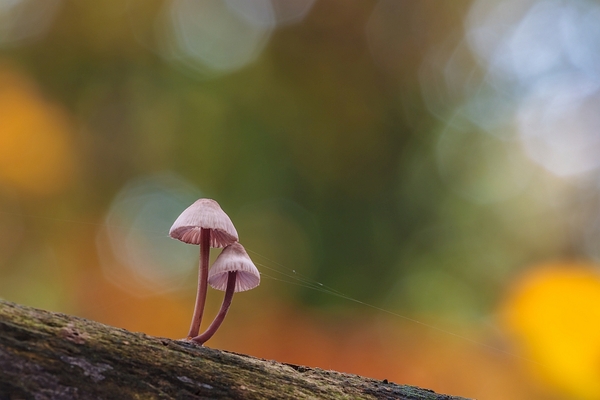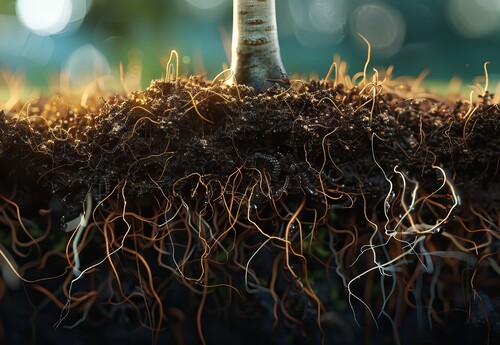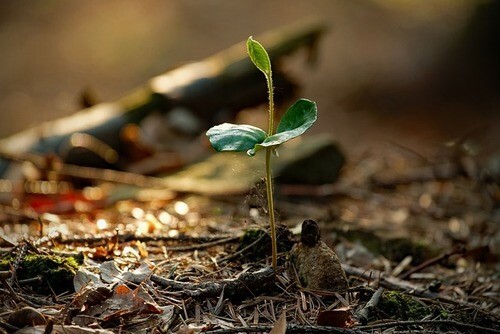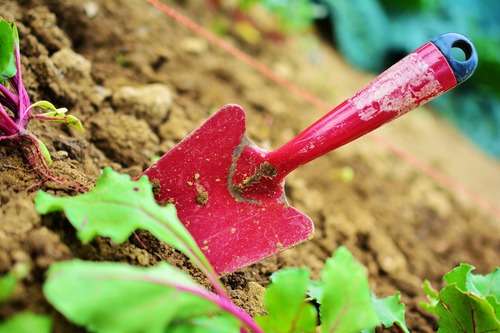Mycorrhizae: My Favorite Kind of Fungi

Introduction
The more ecologists learn about the world, the more it becomes apparent that all living things are interconnected. Trees provide numerous examples of this, as even youngsters understand that trees provide animals with food, shelter, and other resources, while animals spread seeds and pollinate flowers.
However, trees also exhibit a less obvious association called mycorrhiza (plural: mycorrhizae). This particular partnership takes place between the roots of plants and the fungi living in the soil.
Mutual Admiration Society

A Tree's Root System Develops a Relationship with Soil Fungus
The term mycorrhiza refers to the symbiotic relationship between fungi (myco) and the roots of a tree (rhiza). In most cases, both the fungi and the tree derive benefits at relatively little cost. Because both species in the partnership benefit, scientists call the relationship a “mutualistic" one.
Some species manage to live without the help of mycorrhizae, but this is relatively rare. Most research indicates that between 80 and 90 percent of all vascular plants form a relationship with at least one species of fungi. Some species—called obligatory mycorrhizal species—require the fungi to live. By the time they are mature, many trees, such as oaks (Quercus spp.), have formed symbiotic partnerships with several hundred fungal species.
Benefits to the Tree
One of the primary benefits that trees derive from this association is the increased capacity to absorb water and nutrients. This is largely due to the fact that mycorrhizal hyphae—tiny fibers extending from the fungal cells, somewhat akin to a tree’s root system—have more surface area for their volume than the tree’s absorbing roots do. Increased surface area means that the tiny fibers can draw more water from the soil than the tree’s roots can.
The fungi also provide trees with more nutrients than they would otherwise draw from the soil. As with water absorption, the hyphae’s greater surface area helps increase the rate of nutrient absorption. Additionally, the fungi can store and later share resources—particularly phosphorus and nitrogen—when the soil becomes depleted, which is important during times of drought or other stress. This is especially important for the process of forest succession and during the early portion of a tree’s life when it is trying to establish itself in the habitat.

A Tree Sprouts in Healthy Soil with the Help of Mycorrhizae
Benefits for the Fungi
As most mycorrhizal relationships benefit both parties, the fungi also derive benefits from the relationship that help them survive. However, the benefits to the fungus appear to be relatively singular, if profound.
Unlike green plants, which are autotrophic organisms (meaning they produce their own food), mycorrhizal fungi are heterotrophs, which means that they must derive their food from other organisms. Accordingly, the primary benefit fungi derive from their relationship with plants and trees is a steady source of carbohydrates. The more the host tree thrives in the habitat, the more food it will produce and therefore share with the fungi. This means that it is in the fungi’s best interest to help the tree survive.
Types of Fungi
Two primary types of fungi colonize tree roots: arbuscular fungi and ectomycorrhizal fungi. Arbuscular fungi penetrate inside the cells of a tree’s roots and are only observable with the help of a microscope. By contrast, ectomycorrhizal fungi penetrate between the root cells of a tree but then cover the roots by producing a mantle. This mantle is visible to the naked eye.
Forest trees with arbuscular fungi include:
• Cedars (Cedrus spp.)
• Cypresses (Taxodium spp.)
• Junipers (Juniperus spp.)
• Redwoods (Sequoia spp.)
• Maples (Acer spp.)
• Ashes (Fraxinus spp.)
• Dogwoods (Cornus floridana)
• Sycamores (Platanus spp.)
• Tulip trees (Liriodendron tulipifera)
• Sweetgums (Liquidambar spp.)
Forest trees that harbor ectomycorrhizal fungi include:
• Pines (Pinus spp.)
• Firs (Abies spp.)
• Spruces (Picea spp.)
• Hemlocks (Tsuga spp.)
• Oaks (Quercus spp.)
• Hickories (Carya spp.)
• Alders (Alnus spp.)
• Beeches (Fagus grandifolia)
Be Delicate with Dirt

A Small Garden Spade Protrudes from the Soil
In some cases, the amount of mycorrhizal fungi living in the soil can decrease drastically. This often occurs following soil disturbance or the application of fertilizers, fungicides, or pesticides, which kills off many of the subterranean organisms. When this happens, trees—lacking the help of their symbiotic partners—are not able to withdraw as much water and as many nutrients as before.
This situation persists until new fungal spores arrive in the area. Ectomycorrhizal fungi often recolonize areas more quickly than arbuscular fungi do, as many ectomycorrhizal fungi produce airborne spores, which have evolved to travel via the wind. Many such species produce the famous puffball mushrooms—the cloud of dust released contains millions of spores. By contrast, arbuscular fungi produce spores that remain in the ground. Accordingly, many arbuscular mycorrhizae take longer to recolonize depleted areas than ectomycorrhizal species do.
Mycorrhizae and Your Trees
Mycorrhizal fungi can be purchased for application on your property. If the soil around your trees has recently been disturbed, or if you are concerned about a recent fungicide or pesticide application, consult with a certified arborist to determine if this approach is appropriate for you.
We will talk more about mycorrhizal fungi and the role it plays in your trees’ lives in the future, so stay tuned. In the meantime, if your trees are suffering from drought, struggling with pathogens, or simply failing to thrive, contact Arborist Now. Whether you need tree care for a commercial property in San Francisco or a residential lot in Millbrae, our ISA-certified arborists are eager to examine your trees, the site, and the soil conditions and help you determine the best path forward.
Originally published on May 19, 2016.





